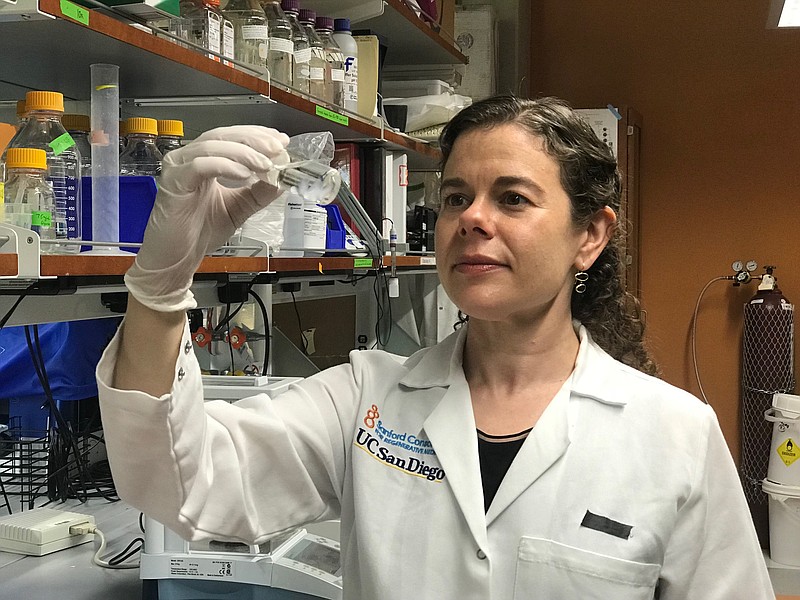UCSD scientist Karen Christman holds up a tube of dehydrated and chemically stripped pig tissue at the UCSD campus in this photo

A jello-like therapy
At her lab at UC San Diego in La Jolla, biomedical engineer Karen Christman grinds up chemically altered pig heart tissue. This material is no longer a collection of cells. It’s been ground up and turned into a fine powder.
When she adds water to this material, it creates a hydrogel.
“Hydrogel is basically a physical material that’s gel-like or water-swollen," Christman said. "So the best example of a hydrogel — not one we use — is jello.”
After a heart attack, the heart tissue is damaged and it forms a scar. As a result, it becomes difficult for healthy cells to come in and replace the tissue.
This situation can slow the heart’s performance and could lead to future heart failure. Christman created this hydrogel to help repair the scarred heart tissue.
“When you inject into the person’s heart it sets up into a hydrogel and serves as this new template for healing into the heart,” she said. “So the body’s own cells come in migrate into it and help repair that damaged region.”
The gel is injected into the damaged part of the heart via a catheter. The gel opens the scar tissue and sticks around for about three weeks before biodegrading.
“You get more cardiac muscle and less scar tissue, you have better performance of your heart, which helps to slow down the progression to heart failure,” Christman said.
This therapy has been tested in animals hearts. But, Christman said, her clinical trial is the first time it was tested in human hearts.
Read more: https://www.kpbs.org/news/2019/sep/11/fighting-heart-disease-pigs-san-diego-researchers-/
